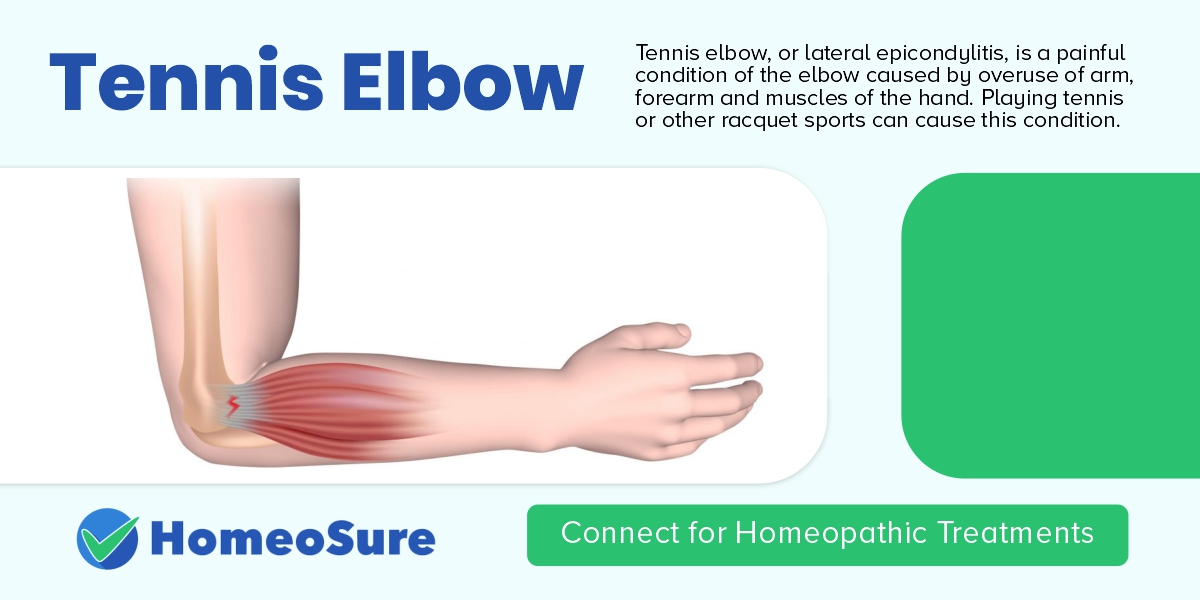Tennis Elbow
Tennis elbow, or lateral epicondylitis, is a painful condition of the elbow caused by overuse of arm, forearm and muscles of the hand. Playing tennis or other racquet sports can cause this condition. However, despite its name, Tennis elbow can also occur in people who do not play tennis or any other sports. It may also be associated with work-related injuries.
Overuse causes damage to the areas of muscles and tendons on the outside of elbow. People who suffer from Tennis elbow include golfers, baseball players, bowlers, gardeners or landscapers, house or office cleaners (because of vacuuming, sweeping and scrubbing), carpenters, mechanics, and assembly-line workers, etc.
Another common term called “Golfer’s elbow” is used when the inner side (medically, medial side) of the elbow is affected.
CAUSES OF TENNIS ELBOW
The overuse of the muscles of forearm causes the tiny tear in the tendons of the forearm. The tear in forearms causes the pain and the stiffness in the elbow of the affected arm.
SYMPTOMS OF TENNIS ELBOW
- The pain of Tennis elbow runs from outer side of the elbow through the forearm and wrist. There is gradual increase in the intensity of the pain which makes the following actions difficult.
- Lifting something from ground
- Holding objects like coffee mugs in hand
- Handshake
- Opening a tight lids of bottles or jars
- Twisting and turning around the doorknob.
HOMEOPATHIC TREATMENT
Contrary to the popular myth that Homeopathic medicines are slow in action, the truth is that Homeopathy is known to bring about amazing results in acute conditions within minutes to few hours. Homeopathic medicines are highly effective and can be safely taken for a long time. With exercises and homeopathic medicines most of the cases of Tennis elbow can be treated well.
Homeopathic treatment is targeted towards UPROOTING THE DISEASE and ensuring health with no side effects. For prescribing to an individual, a PLAN OF TREATMENT is followed which involves:
- GETTING THOROUGH UNDERSTANDING OF CASE which includes complete case taking (analyzing patient as an individual) along with patient history and family history
- DIAGNOSIS OF PATIENT AND DISEASE
- INDIVIDUAL ASSESSMENT OF THE CASE
- PRESCRIBING THE MOST SUITABLE INDIVIDUAL CONSTITUTIONAL REMEDY
